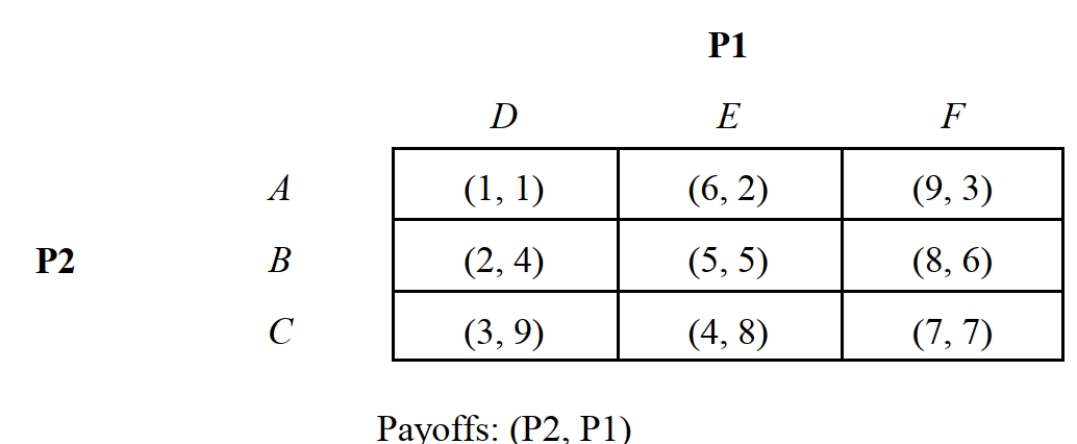Multiple Choice

-Suppose that the game depicted in Figure 11.6 is modeled as a sequential move game in which P2 moves first and the payoffs are (P2, P1) . The subgame perfect equilibrium for this game is:
A) {A ? F}.
B) {C ? D}.
C) {B ? D}.
D) {B ? F}.
E) {C ? F}.
Correct Answer:

Verified
Correct Answer:
Verified
Q37: A subgame equilibrium:<br>A) Is the solution to
Q38: Terminal nodes:<br>A) Designate the end of a
Q39: <img src="https://d2lvgg3v3hfg70.cloudfront.net/TBR1330/.jpg" alt=" -Suppose that the
Q40: <img src="https://d2lvgg3v3hfg70.cloudfront.net/TBR1330/.jpg" alt=" -In the game
Q41: <img src="https://d2lvgg3v3hfg70.cloudfront.net/TBR1330/.jpg" alt=" -Consider the game
Q42: <img src="https://d2lvgg3v3hfg70.cloudfront.net/TBR1330/.jpg" alt=" -Suppose that an
Q43: An extensive-form game summarizes:<br>A) Players, strategies, discount
Q44: <img src="https://d2lvgg3v3hfg70.cloudfront.net/TBR1330/.jpg" alt=" -Suppose that an
Q45: <img src="https://d2lvgg3v3hfg70.cloudfront.net/TBR1330/.jpg" alt=" -Suppose that the
Q47: According to the Stackelberg duopoly model, if